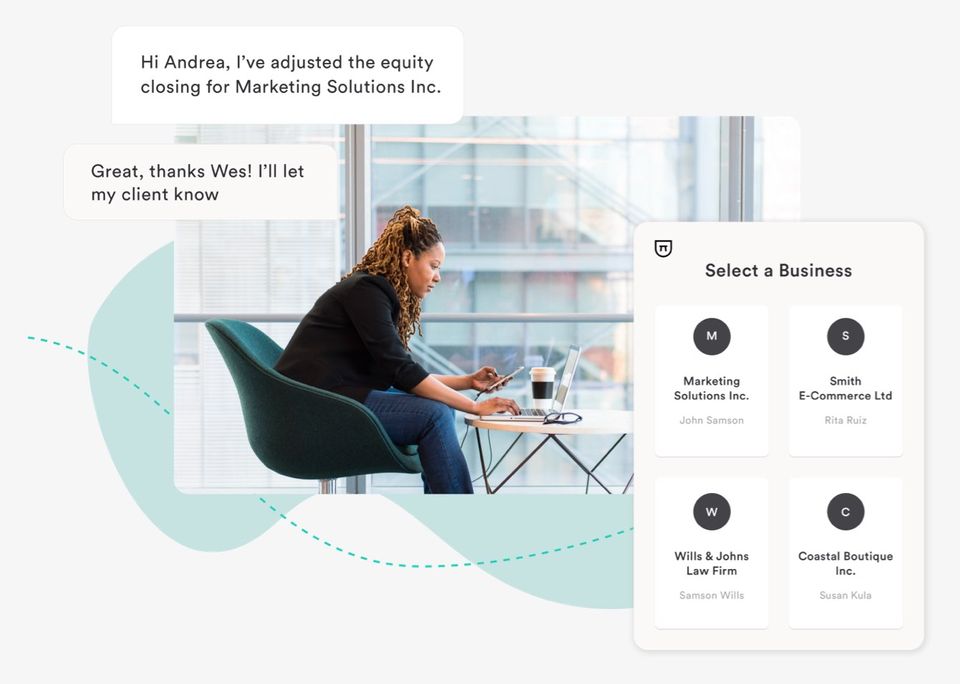For many new business owners, filing taxes is intimidating, a ritual shrouded in mystery. Fair enough: The experience is different for every business, and even minor mistakes can have major repercussions—such as IRS fines.
However, there’s no need to worry. Break it into steps, and filing small business taxes isn’t that complicated.
Here’s how to do it in 10 simple steps, while avoiding any unfortunate mistakes.
Pressed for time this year? Talk to our partners at Bench.
Their all-in-one bookkeeping and tax filing solution will get you filed before the deadline, without missing out on any valuable deductions.
Organize Your Records
Before you get started, you need to make sure you have all your relevant business records gathered and organized.
Split your records into three categories: Basic info, earnings, and expenses.
Basic info is essential for filling out any kind of tax form.
You’ll need:
- Your SSN, date of birth, address, etc.
- Last year’s tax returns
- Your Employer Identification Number (find it on the IRS website)
Earnings information includes:
- Copies of invoices you’ve sent clients
- Records of any goods sold to customers
- Sales records that note money coming into your business
Expense info takes the form of receipts you’ve kept. That includes:
- Rent receipts for your small business
- Office supplies
- Employee salaries
- Client lunches
- Mileage records
Different businesses need different records. Check out these small business tax checklists to keep track of yours
Bring your bookkeeping up to date
If you haven’t stayed on top of your bookkeeping, you aren’t ready to file your taxes. (If your bookkeeping is up to date, however, feel free to skip this section.)
That may sound harsh, but it’s a fact of life. If your records aren’t up to date, you just don’t have the information you need to file.
Luckily, you can still go back and do your bookkeeping retroactively, so long as you have complete records including expenses and earnings.
Here’s how to catch up on bookkeeping:
Record, categorize, and date every business transaction for the year
Going back to your receipts, invoices, and other records, make a note of all money you spent over the year. Start at January 1 of the year, and complete your records up to the current date. You can use accounting software, or an Excel template. Organize each expense according to date and category—when it happened, and how it was spent or earned.
Reconcile your books with your bank accounts
Cross reference your monthly business records with your bank accounts, and make sure that every transaction you recorded happened in reality. If you earned cash, when was it deposited? Which credit cards did you use, and for what? Where there are discrepancies, you’ll have to dig deeper and figure out what actually happened, then make a record of it.
Create financial statements retroactively
Each month of recorded transactions needs to be compiled in the form of financial statements—balance sheets and income statements. You’ll use these to determine your total amount of income and expenses for the year, and use those numbers to file your taxes.
If the prospect of retroactive bookkeeping fails to fill your heart with joy, consider getting help from professional small business bookkeepers. The folks at Bench can bring you quickly up to date. And if you opt for BenchTax, they’ll get your taxes filed for you too.
Stash away money to pay your taxes
Over the course of the year, you should be putting aside money to pay taxes on the profits you report. For many small businesses—especially sole proprietorships, partnerships, and S corporations earning over $1,000 for the year—you’ll have to pay quarterly estimated taxes.
Quarterly taxes are due in the middle of the months of April, June, September, and January.
Rule of thumb: Set aside 25% – 30% of all income for taxes. If possible, put it in a separate bank account that you won’t touch over the course of the year.
You’ve got two strategies for saving tax money:
- If your business has a steady stream of income: Set up automatic bank transfers to pull funds into a secondary savings account on a monthly or biweekly schedule.
- If your business has variable income: Make a habit of setting aside tax money every time you are paid by a client or customer.
It may seem like a hassle at first, but give it a little time, and this process will soon become second nature.
Review payroll taxes
Have employees? You’re responsible for the following:
- FUTA Federal Unemployment Tax (effectively a 0.6% tax on their salary)
- FICA (7.5% for social security and Medicare)
- Collecting and remitting employee income tax
- State and local tax (differs depending on where you are)
You can figure out how much federal payroll tax to withhold using IRS Publication 15.
Plan for sales tax
Sales tax is collected on the state level. Each state is different. This guide to sales tax can help you figure out how much to collect, and how to file and pay.
Choose the right form for your business structure
Once you’ve got your bookkeeping and records sorted out, and you know which taxes you need to pay, it’s time to start filling out forms.
The form you use to file your taxes will depend on your business structure:
Sole proprietorships and single member LLCs
Filing deadline: April 15, 2021 (the same as personal taxes)
Form: IRS Form 1040
Notes:
- Report net profit or loss on Schedule C
- Report itemized deductions on Schedule A
Partnerships and multi-member LLCs
Filing Deadline: March 15, 2021
Forms:
- Form 1065 for the business entity
- Schedule K-1 for each individual member
Notes:
- Each partner or member pays taxes on their individual earnings
- Partners can claim unreimbursed business expenses on Schedule E
C corporations or LLCs electing to file as corporations
Filing Deadline: April 15, 2021 (same as individual taxes)
Form: Form 1120
Notes:
- The corporate tax rate is a flat 21%
- You pay taxes for both the corporation and yourself as an individual
S corporations
Filing Deadline: March 15, 2021
Forms:
- Form 1120S
- Schedule K-1 for each individual shareholder
Notes:
- S corps do not pay taxes—shareholders pay individually on their earnings
Small businesses paying contractors
For each contractor you paid more than $600 during the financial year, you’ll need to file Form 1099-NEC. If it’s your first time filing one, check out this guide to filing 1099s.
Claim small business tax deductions
One of the nice things about working for yourself: There are many more tax deductions you can claim than if you were someone else’s employee.
The exact deductions you can claim will vary according to your specific situation, but these are some of the most common tax deductions for small businesses:
Startup costs
You can deduct any costs up to $5,000 you incur the year your business opens. Above that amount, startup costs can be amortized over 15 years.
Raw materials
The cost of products essential to running your business—pepperoni for your pizza restaurant, wool for your custom knit sweaters—can be deducted.
Office supplies
Small items that get used up—printer ink cartridges, for instance—can be deducted as office supplies. Larger items—like desks and chairs—aren’t deductible. (They’re considered capital goods.)
Commercial rent
Whether it’s an office or a storefront, the cost of renting your business location is tax deductible.
Home office expense
When you run your business from home, you can deduct a proportional amount of your rent, mortgage, and other expenses like utilities and insurance. For instance, if you use 15% of your total square footage as home office space, you can deduct 15% of the cost of your expenses.
Insurance
All ordinary commercial insurance premiums are deductible—such as insurance for buildings, machinery, or equipment.
Business travel
A lot of the expenses you incur while travelling for work are tax deductible. These include airfare, bus passes, local transportation to and from the airport, accommodations, and 50% the cost of meals while you’re travelling.
Salaries and benefits
All salaries and benefits you pay employees (including bonuses) are tax deductible.
File your taxes online
Once you’ve caught up on your bookkeeping, organized your records, and planned your deductions, you’re ready to file your taxes.
If you’re like 92% of Americans in 2018, you file your taxes online.
When you file online, you:
- Don’t have to fill out paper forms
- Get your return to the IRS faster
- Receive your refund electronically with direct deposit
- Use the most secure filing method available
Filing online, you have two options: Free File, and Free Fillable Forms. If your adjusted gross income (AGI) for the year is less than $72,000, you can use Free File. If it’s higher, you must use Free File Fillable Forms.
Here’s how to use each:
Free File
With Free File, you use online software to do your taxes and automatically send a copy to the IRS. It’s popular—about one in three Americans use Free File.
You have 13 providers, approved by the IRS, who you can choose to Free File with. Meaning, don’t go looking for Free File software on the IRS website; you’ll need to choose a provider, and sign up through their site.
For help choosing the right provider for your business, check out this breakdown by Fit Small Business.
Free File Fillable Forms
Unlike simple Free File, Fillable Forms is provided on the IRS website. Essentially, these are digital versions of paper tax forms, with a little automation built in. Once you fill out your main tax forms, you can attach others, like W2s and 1099s.
Once you complete the forms, Fillable Forms automatically calculates how much you’ll receive as a tax refund—or how much you owe the IRS. Then, you can enter your direct deposit information to automatically pay or be paid.
After completing Free File Fillable Forms and submitting them to the IRS, you have the option of printing out copies for your records.
Apply for an extension if you need it
If you won’t be able to file your taxes on time, apply for an extension ASAP, before the deadline. The farther past the deadline you go without filing, the bigger the penalty from the IRS. It’s better to get an extension now than to wait.
A tax extension gives you extra time to file your taxes—but you’ll still need to pay them according to your usual schedule, likely in quarterly estimated payments.
Pay your taxes
If you’re like most businesses, you pay taxes four times a year in estimated tax installments.
Want to know how much you’ll ower? Use Bench’s handy estimated tax calculator.
Visit the IRS Payments Gateway to pay online or over the phone.
If your business is a corporation, you’ll need to file payments through the Electronic Federal Tax Payment System.
Conclusions
Small business tax filing can be surprisingly simple, so long as you take a step by step approach. But if you’re behind on your bookkeeping, or struggling with an already busy schedule, the process becomes more complicated.
Check out Bench and Bench Tax, and see how easy tax season becomes when you have professionals taking care of it for you.



